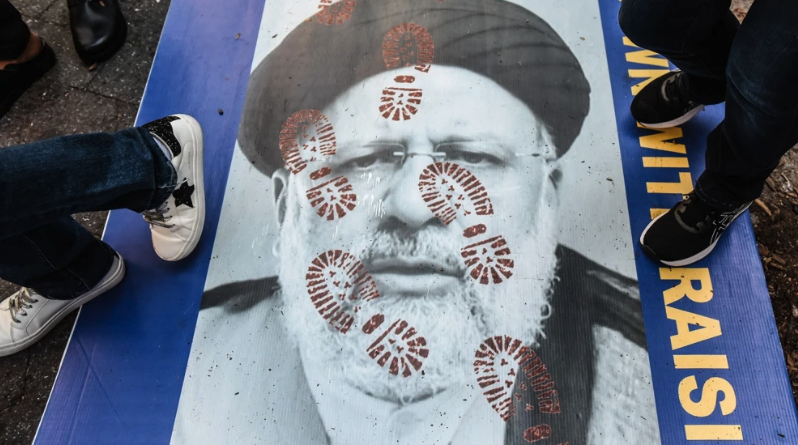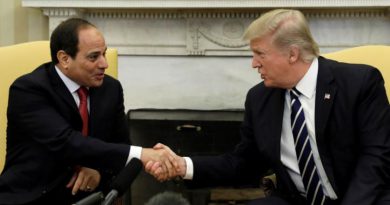OPINION: Iran’s Wonderland – Lies, Hypocrisy, And Paradoxes
by Behrouz Turani
Social media-based eyewitnesses report that security officers use drugs in the bushes around the apartment buildings to prepare themselves for the attack on residents
“It’s a strange world, sweetheart,” said one of modern Iran’s greatest poets Ahmad Shamlou, when he highlighted paradoxes in the post-revolution Iran a few decades ago.
But Shamlou did not imagine in his wildest dreams the paradoxes that characterize Iran in 2022, during its largest protest and uprising in its modern history.
A strange world where as soon as darkness falls, thugs attack residential neighborhoods, where they throw tear gas canisters into apartment buildings while men and women chant the antigovernment slogan “Women, Life, Liberty” from their windows.
In previous centuries, if governments did not like someone they sent him to exile to deprive him of the comfort he used to enjoy at home. In Iran today, the government bars troublemakers from leaving the country.
Hiding under their helmets, heavily armed security forces use megaphones to scare residents of apartment buildings in West-Tehran by telling them that they are prepared to behead their own family members if they need to.
A witty post on Twitter says, “Their women pray for their husbands to get martyred while their husbands threaten to behead their wives. This is a household quarrel. Why do you shout it over a megaphone?”
Social media-based eyewitnesses report that security officers use drugs in the bushes around the apartment buildings to prepare themselves for the attack on residents. Further down south in Tehran, in Nazi Abad, security forces beat a protester to death before shooting him using a shotgun at point blank. And all this happens in an Islamic Republic where the government was supposed to be merciful and compassionate like Allah, the ruling clerics claim to be worshipping.
Officials including clerics are not supposed to lie and deny police vandalism while numerous videos on social media show policemen destroying people’s property. And in self-defense, the police say these were fake policemen in the streets. “Shame on you if the situation is so chaotic that well-equipped fake policemen are patrolling the streets. And shame on you if they are real policemen who destroy people’s property and you do not want to take responsibility for that,” said one Twitter user. It looks even worse when some officials claim that these are Israeli agents dressed as the Islamic Republic Police.
In a similar case about plainclothes officers attacking, arresting and even shooting the protesters, a Twitter user asked: “These days, if we see an armed plainclothesman at a public place, should we assume that he is a terrorist or a plainclothes security officer? Who are those who have created such a safe environment for armed individuals?”
Government officials including President Ebrahim Raisi and Judiciary Chief Gholamhossein Ejei call for dialogue with the nation in a bid to end the protests. At the same time, the same government suspends one of the country’s leading reformist political parties. How can the government tell you that it does not want to be reformed, asked a prominent Iranian journalist.
The government is constantly denying reports about its mischiefs. But few believe such denials. One of the most recent denials came after reports in international media said some Iranian officials were leaving Iran and seeking foreign passports to live somewhere else with their smuggled assets and new identities. Following another denial by the Tehran airport, one Twitter post said: “When they deny a story, that means the news was true.”
For a thousand and one reasons the people no longer trust the government. While the state-run media continue to blame the Islamic State for the attack on Shah Cheragh shrine in Shiraz, people are adamant that it was the Islamic Republic that engineered the attack. Meanwhile, many have noticed flaws and production errors in the footage provided by the state media in the aftermath of the attack. One particular scene many have noticed shows a “dead man” rising, looking at his watch and pretending to be dead again.
And as Iran’s Foreign Minister acknowledged that Iran has given drones to Russia, but not for use in the war against Ukraine, a comment under his tweet asked: “You mean Russia has ordered so many drones for entertainment amid a major political and economic crisis?” and another one said: “”So, you gave the drones to Russia and told them not to use them. Like giving an ice cream to a child and telling him not to lick it.”
Article first published on Iran International.
Behrouz Turani is the author of Iranian Media, A Non-Linear History. He has been advising governments on both sides of the Atlantic during the past three decades as a senior Iran expert.
Disclaimer: Views expressed by writers in this section are their own and do not reflect Milli Chronicle’s point-of-view.



